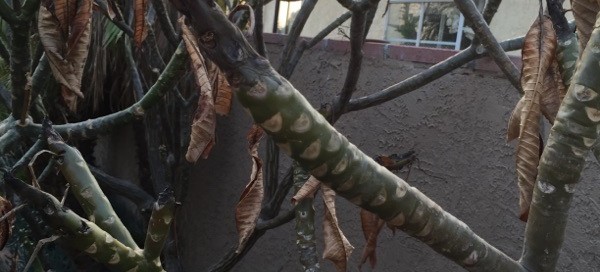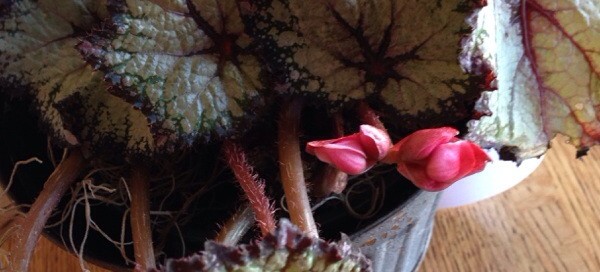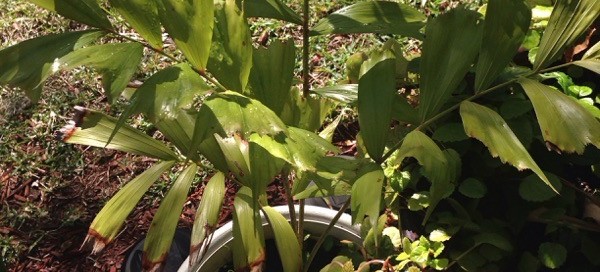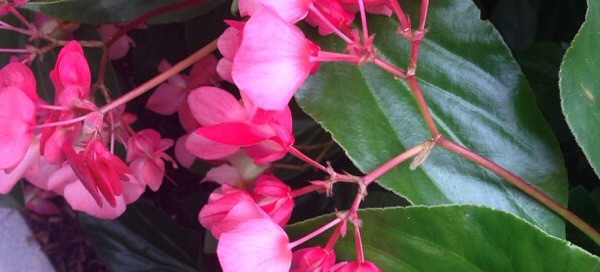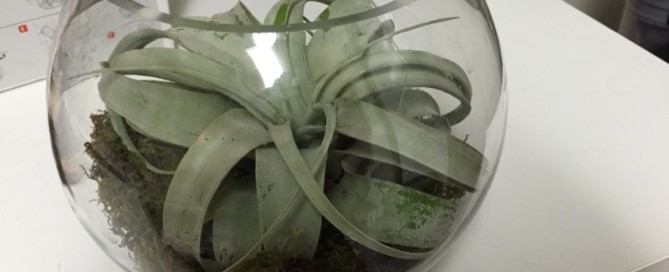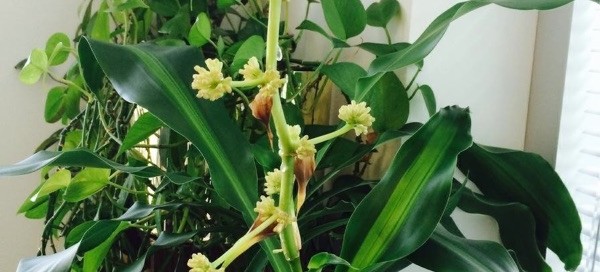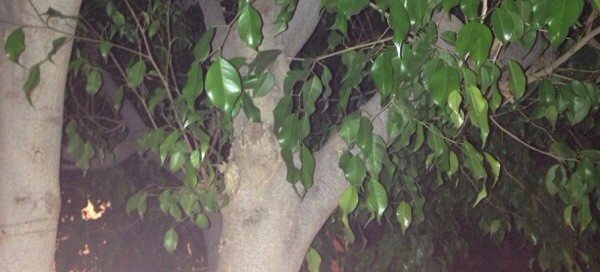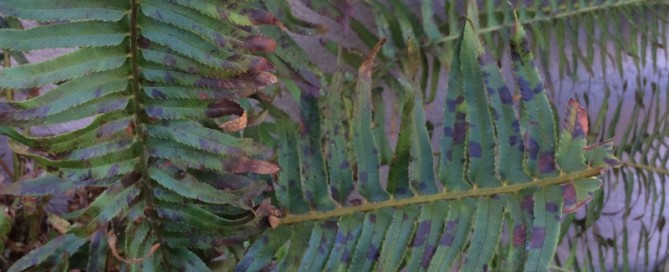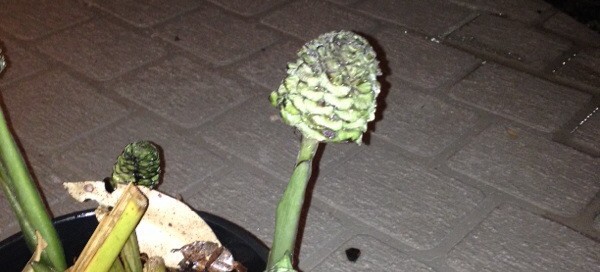Plumeria Problem
Your Plumeria plant needs well-draining soil, full or partial sun and regular water. From what we can see in this photo, it did suffer from frost damage. However, this is also the time of year that Plumeria go dormant and shed their leaves. Cut back on water but do not allow soil to dry out completely and protect from future evenings of frost by spraying with an antitranspirant or covering with a horticultural blanket. Do not prune off damaged portion until new leaves emerge and you can see exactly where the damaged portions extend. Also, protect the roots from frost damage by applying a 3 inch layer of mulch around the plant, leaving about a 2-4 inch diameter clearance, away from the base of the plant. We hope you can save your plant.
